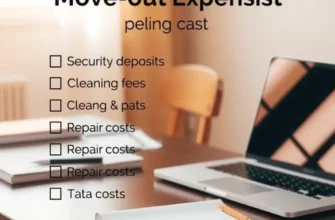Renting a home or apartment is an exciting step toward independence, particularly for young professionals, first-time renters, students, and families. Whether you’ve just landed a job and are looking for your first place or you’re planning to move in with your partner, clarity in your lease agreement is essential. Lease amendments, the changes or additions made to your original rental contract, can often seem confusing or daunting. However, understanding and properly documenting these amendments plays a crucial role in protecting your financial interests and ensuring a smooth rental experience. This guide will walk you through the key elements of lease amendments, empowering you to handle them effectively and confidently. From determining what demands a lease amendment to documenting these changes accurately, we’ll provide practical advice tailored to your needs, making your renting journey easier and more transparent.
Understanding Lease Amendments

Lease amendments are adjustments to the original terms of a rental agreement. They can address various aspects, such as rent changes, alterations to pet policies, or modifications to maintenance responsibilities. As a tenant, understanding these amendments is crucial to ensure that your rights and obligations remain clear and legally binding.
A lease amendment is a formal, written agreement between a landlord and tenant that alters specific terms of the existing lease. It is distinct from merely verbal agreements or casual notes, which can lead to misunderstandings and disputes. Formal documentation of these changes is essential to prevent potential conflicts and ensure both parties are on the same page.
There are several types of lease amendments. Rent increase amendments are common, often aligning with inflation or market adjustments. Pet policy changes occur frequently, particularly if your lifestyle evolves to include a furry companion. Then there are amendments involving maintenance responsibilities, which clearly detail who is accountable for certain repairs. These adjustments can range from minor repairs to significant structural changes.
Documenting lease amendments is crucial for many reasons. Primarily, it provides a legal record of any modifications agreed upon between the landlord and tenant. This protection is critical if disputes arise. Having a formal record also aids in avoiding misunderstandings and ensures clarity. Landlords and tenants have equal opportunities to propose amendments, but all changes must be mutually agreed upon.
Your landlord plays a significant role in shaping the lease amendments. Typically, amendments originate from the landlord, though tenants can also propose changes. When an amendment is proposed, it’s essential to review it thoroughly before agreeing. Some changes might not align with your expectations or living conditions. For instance, if an amendment suggests significant rent increases, evaluate them against local market trends.
Tenants also have rights when it comes to lease amendments. These rights include negotiating terms that are more favorable or declining amendments that seem unreasonable. If a proposed amendment unfavorably alters the lease’s terms, you can seek legal advice or negotiate adjustments that are acceptable to both parties.
To formalize a lease amendment appropriately, ensure that all parties involved sign the document. This signature indicates consent and acknowledgment of the changes. It’s advisable to keep a copy for your records and ensure your landlord retains a copy too. Digital copies can also be beneficial, providing quick access when needed.
For tenants considering adjustments related to financial terms, understanding utility charges here can offer additional insights. Clarity on payment obligations and utility structures helps in negotiating fair terms.
In summary, understanding lease amendments enhances your ability to maintain a stable and transparent rental relationship. By recognizing the importance of documented changes and knowing your rights, you can successfully navigate the process of lease amendments.
Best Practices for Documenting Amendments

When it comes to lease amendments, proper documentation is crucial for avoiding future disputes. Here, we’ll explore the best practices to document these modifications effectively.
First, it’s essential to draft a written form of the amendment as soon as both parties agree on the changes to your lease. Formalization in writing ensures there’s a clear record of what was discussed and agreed upon, reducing misunderstandings. While verbal agreements might seem convenient, they often lead to disagreements due to differing recollections.
Once the terms of your amendment are defined, utilize templates for formal requests to ensure all necessary elements are included. Templates can help structure your document, avoiding overlooked details. Many resources online offer templates tailored for various types of amendments, ensuring your request is exhaustive and professional.
Don’t forget the importance of signatures. Both parties should sign the amendment to signify mutual acceptance, legitimating the change. Without signatures, the amendment might be considered invalid or non-binding. This step is non-negotiable—a handshake isn’t enough.
After drafting and signing, ensure both you and your landlord have retained copies. It’s best practice to give and keep these copies in both physical and digital formats. Utilize cloud storage options for digital copies, ensuring they’re accessible even when you’re not near your physical documents. Physical copies should be kept with your rental records for easy reference.
Besides the lease amendments themselves, it’s vital to keep a detailed log of communications with your landlord related to these changes. Make a habit of documenting emails, texts, or written letters. For phone calls or in-person discussions, note down the date, time, and key points covered. Maintaining such records could prove invaluable.
When considering aspects like utility charges, understanding how they intertwine with your lease can help you address potential amendments. For more insights on utility management, visit this guide on understanding utility charges.
Finally, ensure you stay informed about your local rental laws. They can significantly affect the process and enforceability of amendments. Knowledge of these can avert unwanted alterations that conflict with the law. It’s a step often overlooked, yet compliance with regulations is as critical as the amendments themselves.
In essence, documenting lease amendments with diligence ensures clarity and protection for both parties. With the right practices, you’ll navigate these adjustments smoothly, creating a secure and mutual understanding with your landlord.
Final words
Navigating lease amendments doesn’t have to be a stressful endeavor. By understanding what these amendments are and following best practices for documentation, you can protect your rights as a tenant and ensure a positive renting experience. Whether you’re a first-time renter or a seasoned tenant, being proactive and organized can make a significant difference in how you handle your rental agreements. Remember to communicate openly with your landlord, always document any changes, and retain copies for your records. These straightforward steps will help you maintain financial clarity and peace of mind as you embark on your leasing journey.









